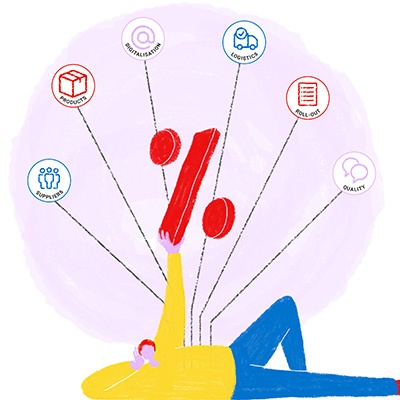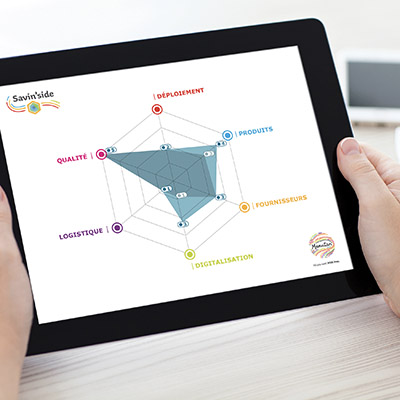In an ever-evolving economic environment, innovation has become essential for companies seeking sustainable development. However, establishing a culture of innovation is not always straightforward. Each employee must be able to create, experiment, and challenge the status quo under optimal conditions. When effective and embodied by all, an innovative culture stimulates creativity and team efficiency whilst fostering agility and resilience in the face of change.
The importance of innovation in business
Innovation is a process that provides added value for a company. It takes the form of a product, service, process, or business model that is both new and useful. It doesn't necessarily involve major revolutions within the company. Sometimes, innovation lies in simply adding features to a product or finding a new way to perform a task, always with the aim of meeting customer needs.
Boosting growth
An innovation culture is primarily seen as a catalyst for growth. Companies can exploit new business opportunities, diversify their revenue streams, and improve their overall performance.
Improving competitiveness
Innovation is also a formidable lever for differentiation. Companies can stand out from the competition by offering unique, high-value solutions. An innovation culture creates an environment that encourages employees to constantly seek improvements, which can lead to productivity gains.
Strengthening customer centricity
An innovation culture involves a deep understanding of customer needs. Teams put the customer at the heart of their thinking, analysing their feedback and not hesitating to co-create with them. This contributes to improving both satisfaction and loyalty.
Best practices for creating an innovation culture
Creating an innovation culture within an organisation requires a specific mindset, values, and practices. Creativity, willingness to experiment, and reflection must constantly be valued. There are many best practices to contribute to such a corporate culture, ranging from establishing a structure to foster innovation to rewarding each project team.
Implementing a process and tools
Firstly, it's important to formalise processes and implement appropriate tools to support innovative initiatives. Companies can start by setting up a dedicated budget and clear objectives for innovation. After that, they can rely on ideation platforms, workshops, and measurement systems to bring their projects to life. With such a structure, companies will be able to identify the best ideas, implement them effectively, and track their progress.
Encouraging collaboration and diversity
Collaboration and diversity are two key characteristics of an innovation culture. It's important that employees from different backgrounds, training, and experiences work together. They can share their ideas, knowledge, and skills. It's precisely this richness of perspectives that will bring innovative solutions to the challenges identified within the company. This involves fostering cooperation between various departments, of course, but also with external partners such as startups, industry experts, or even educational institutions.
Investing in continuous learning
To successfully develop an innovation culture, teams need adapted skills and knowledge. Everyone must learn to innovate, that is, to adopt agile methods and creative thinking, to use new technologies... Companies must therefore invest in the continuous training and development of employees. This can take the form of training programmes, but also workshops, seminars, or mentoring opportunities. Ultimately, the idea is to encourage them to become actors in their own learning.
Advocating a culture of error
In an innovation culture, growing a tolerance for failure is essential, employees obviously have the right to make mistakes. Failure is clearly established as part of the innovation process, and even as a learning opportunity. This involves providing a safe and supportive work environment and the necessary resources to allow everyone to freely experiment with their ideas, to step out of their comfort zone without fear of failure. This can involve organising risk-taking by setting a course, or establishing a feedback system to better understand mistakes.
Measuring the impact of your innovation approach
To boost your innovation strategy, it's crucial to measure the effectiveness of innovation efforts within your company. This inevitably involves setting up key performance indicators such as the number of new ideas generated, the success rate of these projects, the return on investment of these initiatives, or stakeholder satisfaction. Whatever data is collected, it is then used to refine and improve the innovation process.
Rewarding innovative initiatives
Lastly, leaders must implement a system to recognise and reward the efforts of each team and the results of their innovations. This is key to maintaining motivation and engagement among employees. Communication about projects, success celebration, individuals' identification, suggestions for incentives... are all ways to encourage the pursuit of innovative ideas.
Nowadays, innovation is no longer an option, but a necessity to thrive in the long term. Companies therefore have every interest in developing an innovation culture, by soliciting the engagement and collaboration of their entire ecosystem. It is now up to each organisation to build a structured framework that is conducive to learning, risk-taking, creativity and innovation.









